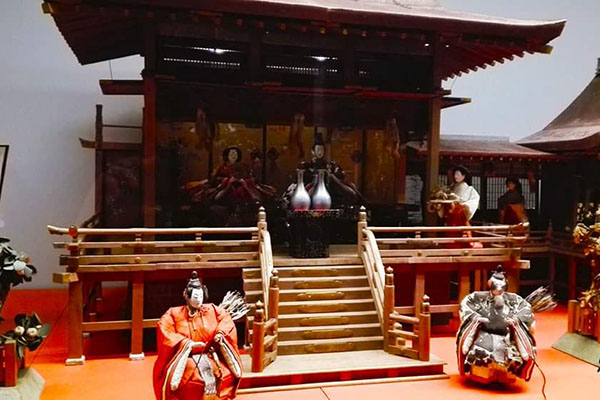Japanese New Year Decorations and Their Origins In Japan, New Year’s Day (January 1st) is the most important holiday of the year. Similar to Thanksgiving in the United States, families gather to celebrate the start of a new year. As part of these celebrations, special seasonal decorations are prepared. These include shimenawa (sacred ropes made of braided straw), kadomatsu (decorations made of pine and bamboo), and kagami mochi (decorative rice cakes). Each of these has a significant meaning and role, but in this article, we will focus on shimenawa. In Japan, many people follow Shinto (one of Japan’s two main…
View More OMOTENASHI: “Japanese New Year Decorations and Their Origins”Category: TRADITIONAL CULTURE
Owari Tsushima Tenno Festival
This 500-year-old festival was the favorite festival of samurai and Oda Nobunaga, a Japanese daimyō, of the Sengoku period.
View More Owari Tsushima Tenno FestivalHistory of Gion Matsuri
The birth of Gion matsuri dates back to 869, when the plague decimated a large part of the population.
View More History of Gion MatsuriIf You Like Nikuman Buns, You’ll Love Nagano’s Oyaki
Whenever I arrive in Japan, for my first meal do I go to a fancy sushi joint? A Michelin 3-star restaurant? An izakaya? Nope.
View More If You Like Nikuman Buns, You’ll Love Nagano’s OyakiThe Mountain Pirate Chicken Pun
If you’ve ever been to Nagano Prefecture in the Japanese Alps, you’ve probably had a chance to eat one of the local specialties, a type of fried chicken called sanzoku-yaki (山賊焼き) which is usually rendered into English as “Mountain pirate (or bandit) chicken.”
View More The Mountain Pirate Chicken PunThe festival of dolls or festival Hina (Hinamatsuri)
The origin of this holiday would come from China. During the period Edo, March 3 was considered the day of growth and the happiness of girls.
View More The festival of dolls or festival Hina (Hinamatsuri)25 Tips for a Great Trip to Japan
Why are Traffic Lights Blue in Japan?
Traffic lights in Japan are red, yellow, and blue. Or are they red, yellow, and green? Well…it depends on what you mean by blue and green.
View More Why are Traffic Lights Blue in Japan?The Uniqueness of Japanese Time
In Japan’s historic timekeeping system, the length of an hour changed daily
View More The Uniqueness of Japanese TimeJapanese Traditional Game “Ohajiki”
This game was introduced from China during the Nara period (710-794). At that time, flints were used to play “Ishi-hajiki (stone kick)”.
View More Japanese Traditional Game “Ohajiki”The Substitute Dog (Okage-inu)
This once in a lifetime pilgrimage was known as okage-mairi. People of all classes would partake in this pilgrimage
View More The Substitute Dog (Okage-inu)Pursuing a Traditional Japanese Apprenticeship in the Reiwa Era
Japan is renowned worldwide as a country steeped in a culture that combines both tradition and modernity….
View More Pursuing a Traditional Japanese Apprenticeship in the Reiwa Era











